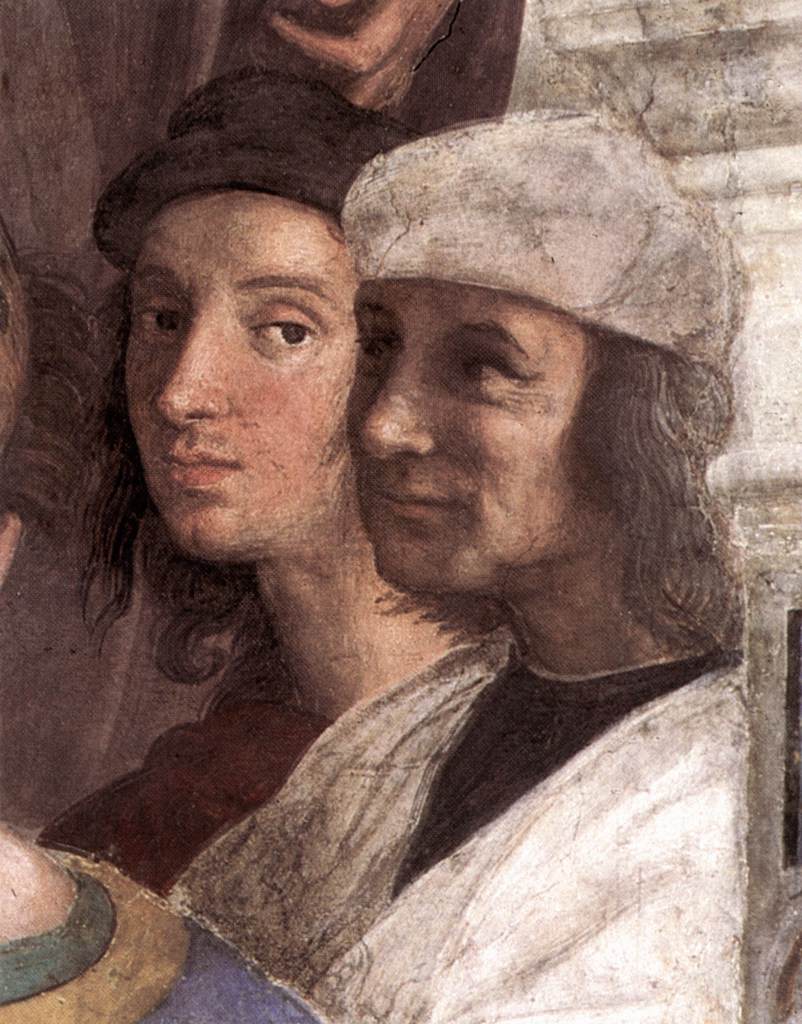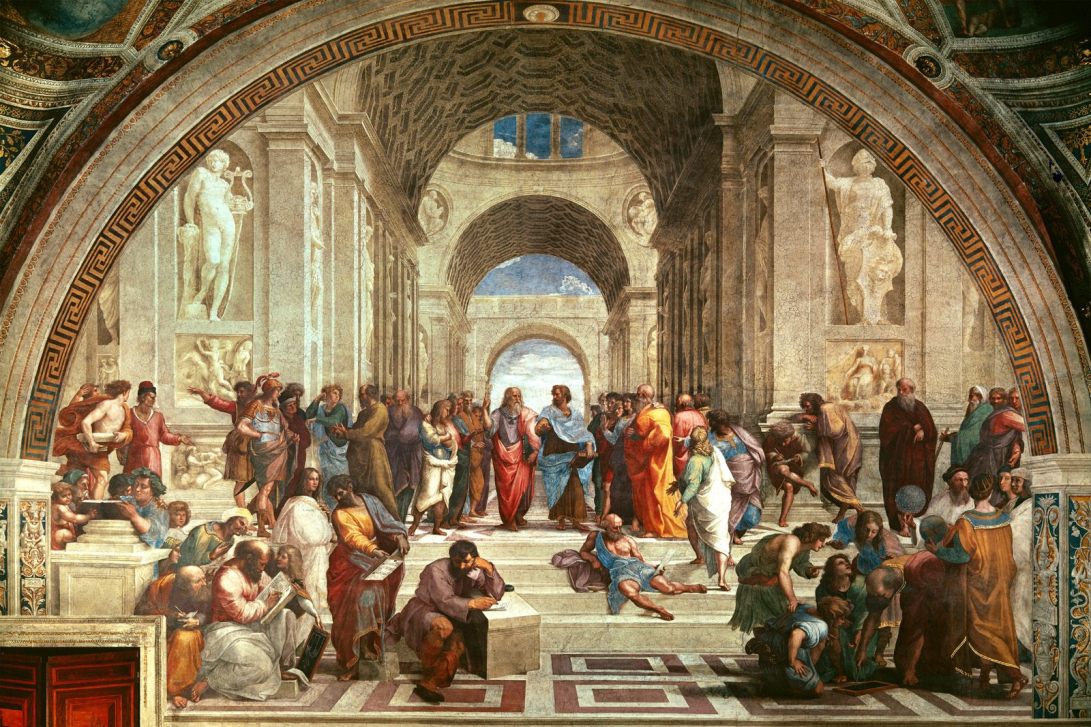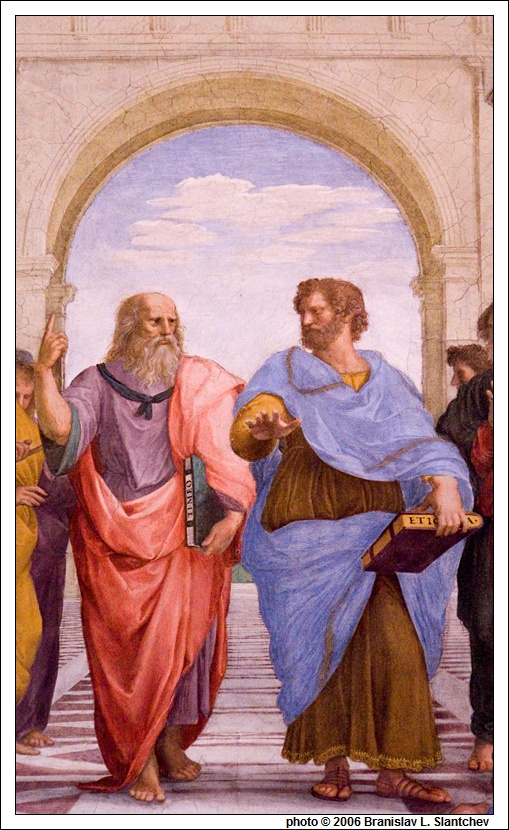Raphael’s School of Athens is full of important figures from the leading schools of ancient Greece unified in this Renaissance masterpiece. This frescoe is devoted to philosophy as a path to knowledge.
Born after Michelangelo, Raphael most embodied the Classical aspect of the High Renaissance. He relied heavily on translated Greek and Roman texts. His work incorporated the “forms and philosophy of Classical antiquity” (Adams 294). Raphael’s career began in Florence but he soon moved to Rome where he created The School of Athens. In this painting the 21 figurers (many philosophers) are lined up on the steps in distinct groupings. They are engaged in conversation, work, or games. Pythagoras demonstrates his system of proportions, Diogenes lounges on the steps, and Greek mathematician Euclid discusses geometry and draws aided by a compass. Apollo and Athena are also represented in the two monumental statues on either side of the arch.
Framed by the center arch, in the central vanishing point of the painting, stand the two most well-known Greek philosophers: Plato and Aristotle. Each carries their seminal works: for Plato it is Timaeus and for Aristotle- Nichomachean Ethics.
The School of Athens is a truly great example of rich iconography. Raphael even represents himself sociably in contrast with Michelangelo’s brooding. Raphael relates to his colleagues and companions whereas Michelangelo is notably isolated. The division represents an ongoing competitive rivalry between the artists. 

